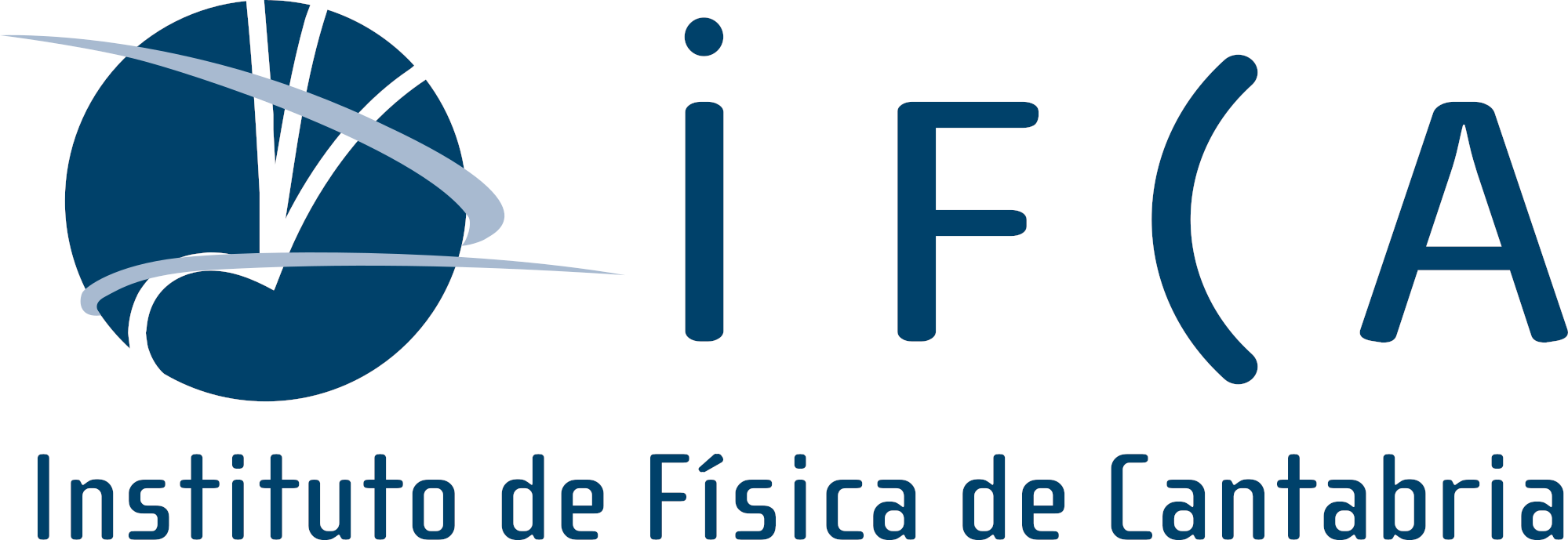Papers
2025 - Enhancing Radiomic Feature Robustness through Voxel Spacing–Aware Extraction in Anisotropic CT Data
Title: Enhancing Radiomic Feature Robustness through Voxel Spacing–Aware Extraction in Anisotropic CT Data
Authors: David Corral Fontecha, Pablo Menéndez Fernández-Miranda, Sergio Rubio Martin, Alicia Merayo-Cordoba, Laura Lopez Gonzalez, Lara Lloret Iglesias y Jose Antonio Vega Alvarez
Conference: : IEEE INTERNATIONAL SYMPOSIUM ON COMPUTER-BASED MEDICAL SYSTEMS
2024 - Sistema de vision artificial basado en aprendizaje profundo para la detección automática de defectos superficiales en pavimentos.
Title: Sistema de visión artificial basado en aprendizaje profundo para la detección automática de defectos superficiales en pavimentos.
Authors: Saúl Cano-Ortiz; Eugenio Sainz-Ortiz; Lara Lloret Iglesias; Pablo Martínez Ruiz del Árbol; Daniel Castro-Fresno
Conference: : IX Congreso Iberoamericano de Gestión y Tecnología de la Construcción
2024 - Multi-task Learning Approach for Intracranial Hemorrhage Prognosis
Title: Multi-task Learning Approach for Intracranial Hemorrhage Prognosis
Authors: Miriam Cobo, Amaia Pérez del Barrio, Pablo Menéndez Fernández-Miranda, Pablo Sanz Bellón, Lara Lloret Iglesias & Wilson Silva
Conference: International Workshop on Machine Learning in Medical Imaging at MICCAI 2024
2024 - Making Federated Learning Accessible to Scientists: The AI4EOSC Approach
Title: Making Federated Learning Accessible to Scientists: The AI4EOSC Approach
Authors: Judith Sáinz-Pardo Díaz, Andrés Heredia Canales, Ignacio Heredia Cachá, Viet Tran, Giang Nguyen, Khadijeh Alibabaei, Marta Obregón Ruiz, Susana Rebolledo Ruiz, Álvaro López García.
Conference: 2024 ACM Workshop on Information Hiding and Multimedia Security (IH&MMSec '24)
2023 - Comparison of machine learning models applied on anonymized data with different techniques
Title: Comparison of machine learning models applied on anonymized data with different techniques
Authors: Judith Sáinz-Pardo Díaz and Álvaro López García
Conference: 2023 IEEE International Conference on Cyber Security and Resilience (CSR)
DOI: 10.1109/CSR57506.2023.10224917
2021 - On the use of Deep Generative Models for ”Perfect” Prognosis Climate Downscaling
Title: On the use of Deep Generative Models for ”Perfect” Prognosis Climate Downscaling
Author: Jose González-Abad ; Jorge Baño-Medina; Ignacio Heredia
Conference: NeurIPS 2021 Workshop on Tackling Climate Change with Machine Learning
URL: https://www.climatechange.ai/papers/neurips2021/67
2017 - Large Scale Plant Classification with Deep Neural Networks
Title: Large Scale Plant Classification with Deep Neural Networks
Author: Ignacio Heredia
Conference: Proceedings of the ACM Computing Frontiers Conference, 259-262
DOI: https://doi.org/10.1145/3075564.3075590
2017 - Improved Cloud resource allocation: how INDIGO-DataCloud is overcoming the current limitations in Cloud schedulers
Title: Improved Cloud resource allocation: how INDIGO-DataCloud is overcoming the current limitations in Cloud schedulers
Authors: Lopez Garcia A.
Journal: Journal of Physics: Conference Series - Nov/2017
DOI: 10.1088/1742-6596/898/9/092010
2016 - Evolution of the open cloud computing interface
Title: Evolution of the open cloud computing interface
Authors: Boris Parák, Zdeněk Šustr, Michal Kimle, Pablo Orviz Fernández, Álvaro López García, Stavros Sachtouris, Víctor Méndez Muñoz
Conference: CLOSER 2016 - Proceedings of the 6th International Conference on Cloud
ISBN: 9789897581823
EID: 2-s2.0-84979608100
2014 - The role of IBERGRID in the Federated Cloud of EGI
Title: The role of IBERGRID in the Federated Cloud of EGI
Author: Álvaro López García
Conference: Proceedings of the IBERGRID 2014 Conference
ISBN: 978-84-9048-246-9
2013 - Identity Federation with VOMS in Cloud Infrastructures
Title: Identity Federation with VOMS in Cloud Infrastructures
Author:
Conference: 2013 IEEE 5th International Conference on Cloud Computing Technology and Science
2013 - Analysis of Scientific Cloud Computing requirements
Title: Analysis of Scientific Cloud Computing requirements
Author: Álvaro López García
Conference: Proceedings of the IBERGRID 2013 Conference
2012 - Production change management using Puppet, Git, Jenkins and Gerrit
Title: Production change management using Puppet, Git, Jenkins and Gerrit
Author: Álvaro López García
Conference: Proceedings of the IBERGRID 2012 Conference
2012 - IberCloud: federated access to virtualized resources
Title: IberCloud: federated access to virtualized resources
Author: Álvaro López García
Conference: Proceedings of the IBERGRID 2012 Conference
2011 - Software Provision Process for EGI
Title: Software Provision Process for EGI
Author: Álvaro López García, Pablo Orviz
Conference: Proceedings of the IBERGRID 2011 Conference
ISBN: 978-84-9745-884-9
2011 - Fostering multi-scientific usage in the Iberian production infrastructure
Title: Fostering multi-scientific usage in the Iberian production infrastructure
Author: Álvaro López García
Conference: Proceedings of the IBERGRID 2011 Conference
ISBN: 978-84-9745-884-9
2011 - Focusing on an integrated computing infrastructure: the IFCA experience
Title: Focusing on an integrated computing infrastructure: the IFCA experienceAuthor: Álvaro López García
Conference: Proceedings of the IBERGRID 2011 Conference
ISBN: 978-84-9745-884-9
2011 - Experience on running the Ibergrid infrastructure within EGI
Title: Experience on running the Ibergrid infrastructure within EGI
Author: Álvaro López García
Conference: Proceedings of the IBERGRID 2011 Conference
ISBN: 978-84-9745-884-9
2010 - Virtualization and network mirroring to deliver High Availability to Grid services
Title: Virtualization and network mirroring to deliver High Availability to Grid services
Author: Álvaro López García
Conference: Proceedings of the IBERGRID 2010 Conference
ISBN: 978-84-9745-549-7
2010 - Provisioning of Grid Middleware for EGI in the framework of EGI-InSPIRE
Title: Provisioning of Grid Middleware for EGI in the framework of EGI-InSPIRE
Author: Álvaro López García
Conference: Proceedings of the IBERGRID 2010 Conference
ISBN: 978-84-9745-549-7
2010 - Int.eu.grid
Title: Int.eu.grid
Author: Álvaro López García, Pablo Orviz
Conference: Proceedings of the IBERGRID 2010 Conference
ISBN: 978-1-4419-5595-1
2010 - Ibergrid transition to EGI
Title: Ibergrid transition to EGI
Author: Álvaro López García
Conference: Proceedings of the IBERGRID 2010 Conference
ISBN: 978-84-9745-549-7
Presentations
2024 - Sistema de visión artificial basado en aprendizaje profundo para la detección automática de defectos superficiales en pavimentos.
Title: Sistema de visión artificial basado en aprendizaje profundo para la detección automática de defectos superficiales en pavimentos.
Authors: Saúl Cano-Ortiz; Eugenio Sainz-Ortiz; Lara Lloret Iglesias; Pablo Martínez Ruiz del Árbol; Daniel Castro-Fresno
Conference: : IX Congreso Iberoamericano de Gestión y Tecnología de la Construcción
2024 - MAPSIA: Automated Pavement Distress Detection for Optimal Road Maintenance Planning
Title: MAPSIA: Automated Pavement Distress Detection for Optimal Road Maintenance Planning
Authors: Saúl Cano-Ortiz; Eugenio Sainz-Ortiz; Lara Lloret Iglesias; Pablo Martínez Ruiz del Árbol; Daniel Castro-Fresno
Conference: Transport Research Arena (TRA)
2024 - Image-based deep learning system for coronary artery tortuosity diagnosis in coronary angiography
Title: Image-based deep learning system for coronary artery tortuosity diagnosis in coronary angiography
Authors: Miriam Cobo
Coauthors: Lara Lloret Iglesias
2024 - Federated AI in the European Open Science Cloud
Title: Federated AI in the European Open Science Cloud
Authors: Judith Sáinz-Pardo Díaz and Álvaro López García
Conference: Flower AI Summit 2024
2024 - Correlación de tráfico, mantenimiento y tipo de vía con un índice de condición del pavimento obtenido a partir de un sistema de visión artificial
Title: Correlación de tráfico, mantenimiento y tipo de vía con un índice de condición del pavimento obtenido a partir de un sistema de visión artificial
Authors: Saúl Cano-Ortiz; Eugenio Sainz-Ortiz; Lara Lloret Iglesias; Pablo Martínez Ruiz del Árbol; Daniel Castro-Fresno
Conference: Congreso Ibero Latinoamericano del Asfalto (CILA)
2022 - FAIRness Evaluation, Validation and Advising with FAIR EVA
Title: FAIRness Evaluation, Validation and Advising with FAIR EVA
Authors: Fernando Aguilar
Coauthors: Isabel Bernal
Conference: IBERGRID Conference 2022, Faro (Portugal), 10-13 octubre 2022
URL: https://indico.lip.pt/event/1249/contributions/4424/
2022 - FAIR EVA: Evaluator, Validator & Advisor
Title: FAIR EVA: Evaluator, Validator & Advisor
Authors: Fernando Aguilar
Coauthors: Isabel Bernal
Conference: EGI Conference 2022. 19-23 September 2022. Prague, Czech Republic
URL: https://indico.egi.eu/event/5882/sessions/4861/#20220921
2022 - FAIR EVA: Checking data FAIRness in data repositories
Title: FAIR EVA: Checking data FAIRness in data repositories
Authors: Fernando Aguilar
Coauthors: Isabel Bernal
Conference: Open Repositories 2022, Denver, Colorado (USA) 6-10 junio 2022
URL: https://or2022.openrepositories.org/
2022 - Deep learning to estimate wine volume from one single-view image
Title: Deep learning to estimate wine volume from one single-view image
Authors: Miriam Cobo
Coauthors: Begoña Bartolomé, M. Victoria Moreno, Carmen Patricia Pérez Matute, Silvia Yuste, Ignacio Heredia, Daniel García, Fernando Aguilar, Lara Lloret Iglesias
Conference: IBERGRID Conference 2022, Faro (Portugal), 10-13 octubre 2022
URL: https://indico.lip.pt/event/1249/timetable/#20221010
2022 - Artificial Intelligence to evaluate the impact of COVID-19 disease on the elderly
Title: Artificial Intelligence to evaluate the impact of COVID-19 disease on the elderly
Authors: Miriam Cobo
Coauthors: Elena Campos, Andrea Canto, Beatriz Tejedor, Ignacio Ruiz, Carlos Jiménez, Manuel Ramos, Luis Carlos Antón, Margarita del Val, Natalia Molinero, Cristina Jiménez, Diego Taladrid, M. Vicotria Moreno, Benjamín Sanchez, Anabel Álvarez, Santiago Álvarez, Elena Povedano, Sebastián Ruiz, Diego Ramiro, Gloria Guirado, Gloria Castells, Carles Cristofol, Fernando Aguilar, Lara Lloret Iglesias
Conference: II Jornadas de la PTI+ Salud Global, Valencia, Ciudad de las Artes y las Ciencias, 5-6 octubre 2022
URL: https://eventossaludglobal.csic.es/
2021 - On the use of Deep Generative Models for "Perfect" Prognosis Climate Downscaling
Title: On the use of Deep Generative Models for "Perfect" Prognosis Climate Downscaling
Authors: Jose González-Abad; Jorge Baño-Medina; Ignacio Heredia
Conference: NeurIPS 2021 Climate Change Workshop
URL: https://www.climatechange.ai/papers/neurips2021/67
2019 - Using Unsupervised Artificial Neural Networks to Detect Sibling Species: A case in Myxomycetes
Title: Using Unsupervised Artificial Neural Networks to Detect Sibling Species: A case in Myxomycetes
Authors: Francisco Pando, Ignacio Heredia, Lara Lloret
Conference: Biodiversity Information Standards (TDWG) 2019
DOI: https://doi.org/10.3897/biss.3.37255
2018 - Deep learning for weed identification based on seed images
Title: Deep learning for weed identification based on seed images
Authors: Francisco Pando, Ignacio Heredia, Carlos Aedo Pérez, Mauricio Velayos Rodríguez, Lara Lloret Iglesias, Joel Calvo
Conference: Biodiversity Information Standards (TDWG) 2018
DOI: https://doi.org/10.3897/biss.2.25749
2018 - Convolutional Neural Networks for Phytoplankton identification and classification
Title: Convolutional Neural Networks for Phytoplankton identification and classification
Authors: Lara Lloret, Ignacio Heredia, Fernando Aguilar, Elisabeth Debusschere, Klaas Deneudt, Francisco Hernandez
Conference: Biodiversity Information Standards (TDWG) 2018
DOI: https://doi.org/10.3897/biss.2.25762
2018 - Application of a Convolutional Neural Network for image classification to the analysis of collisions in High Energy Physics
Title: Application of a Convolutional Neural Network for image classification to the analysis of collisions in High Energy Physics
Authors: Celia Fernandez Madrazo, Ignacio Heredia Cacha, Lara Lloret Iglesias, Jesus Marco de Lucas
Conference: CHEP 2018 Conference
URL: https://indico.cern.ch/event/587955/contributions/2937535/
2017 - A workbench for species identification based on images and deep learning techniques
Title: A workbench for species identification based on images and deep learning techniques
Authors: Ignacio Heredia, Lara Lloret, Francisco Pando, Jesús Marco
Conference: Biodiversity Information Science and Standards 1: e20569
DOI: https://doi.org/10.3897/tdwgproceedings.1.20569
Posters
2024 - Deep learning for volumetric assessment of primary lung cancer on computed tomography
Title: Deep learning for volumetric assessment of primary lung cancer on computed tomography
Authors: Liliana Petrychenko, Miriam Cobo
Coauthors: Regina Beets-Tan, Kevin Groot Lipman, Laurens Topff
2024 - Deep Learning and Explainability for Multimodal Medical Data
Title: Deep Learning and Explainability for Multimodal Medical Data
Authors: Miriam Cobo
Coauthors: Wilson Silva, Lara Lloret Iglesias
2023/07 - Deep learning to detect coronary artery tortuosity in coronary angiography
Escuela de verano AIHUB CSIC
Author: Miriam Cobo Cano.
July 3 - 7 2023. CaixaForum Macaya Barcelona, Spain.
2023/07 - Application of federated learning to medical imaging scenarios
AIHUB CSIC Summer School 2023
Authors: Judith Sáinz-Pardo Díaz and Álvaro López García.
July 3 - 7 2023. Barcelona, Spain.
2023/05 - Reliable machine learning algorithms for medical imaging
X Jornadas doctorales y V jornadas de divulgación. Grupo de Universidades G9
Authors: Miriam Cobo Cano, Pablo Menéndez Fernández-Miranda (codirector), Lara Lloret Iglesias (director).
May 31 - 2 June 2023. University of Oviedo, Spain.
2023/05 - Privacy preserving techniques for data science
X Jornadas doctorales y V jornadas de divulgación. Grupo de Universidades G9
Authors: Judith Sáinz-Pardo Díaz and Álvaro López García (director).
May 31 - 2 June 2023. University of Oviedo, Spain.
2022/09 - pyCANON: A Python library to check the level of anonymity of a dataset
The unstoppable improvements in data analysis techniques for knowledge extraction and decision-making make necessary the evolution of techniques for the secure publication of data. Moreover, the need for collaboration between different institutions, research centers or companies makes it necessary to be able to share data with certain security guarantees. There are numerous attacks that can be carried out on databases: re-identification, linkage, skewness and semantic attacks among others. For this the implementation of pyCANON, a Python library and CLI that can be used to know the level of anonymity of a dataset (and thus publish or share it while being aware of the risks involved), is presented. Nine different techniques will be used for this purpose.
2nd Inria-DFKI European Summer School on AI, IDESSAI 2022.
August 29 - September 2, 2022. Saarbrücken, Germany.
2022/09 - Frouros: A Python library for drift detection in Machine Learning problems
In real-world ML problems, models tend to suffer some degradation in terms of performance over time, due to changes in the concept of what is first learned by the model (concept drift), or due to significant changes in the variables used by the model (data/covariate drift). We present Frouros, a Python library capable of detecting drift using both supervised and unsupervised drift detection methods, and which can be easily integrated with scikit-learn.
2nd Inria-DFKI European Summer School on AI, IDESSAI 2022.
August 29 - September 2, 2022. Saarbrücken, Germany.
2022/06 - SQAaaS - Ensuring Software, Service and Data quality automatically in open repositories
SQAaaS - Ensuring Software, Service and Data quality automatically in open repositories
Authors: Fernando Aguilar
Coauthors: Pablo Orviz, Isabel Bernal
Conference: Open Repositories 2022, Denver, Colorado (USA) 6-10 junio 2022
URL: https://or2022.openrepositories.org/
2020/07 - The ethical and legal issues arising from the implantation of AI systems in the radiological practice
Title: The ethical and legal issues arising from the implantation of AI systems in the radiological practice
Authors: Menéndez Fernández-Miranda, Pablo ;Sanz Bellón, Pablo ;Pérez del Barrio, Amaia ;Marco de Lucas, Enrique ;Rodríguez González, David ;Lloret Iglesias, Lara ;Vega Álvarez, José Antonio
Conference: European Congress of Radiology-ECR 2020
2020/07 - Radiologists in the regulation of the responsibilities of artificial intelligence applied to radiodiagnosis: Let's make it real.
Title: Radiologists in the regulation of the responsibilities of artificial intelligence applied to radiodiagnosis: Let's make it real
Authors: Sanz Bellón, Pablo ;Pérez del Barrio, Amaia ;Menéndez Fernández-Miranda, Pablo ;Pérez, J. Domingo ;Lloret Iglesias, Lara ;Rodríguez González, David
Conference: European Congress of Radiology-ECR 2020
2019/04 - Deep Learning techniques for Satellite data: Atmospheric Corrections
Deep Learning techniques for Satellite data: Atmospheric Corrections
Remote sensing is a technique that allows obtaining information about an object through the analysis of data acquired by sensors that are not in contact with it, and the detection of changes from a multi-temporal sequence of satellite data is one of its most important applications.
As is well known, this process requires the application of atmospheric corrections to the images, so that the changes detected are only attributable to real landscape modifications. One of the techniques often recommended for applications of classification and detection of changes is the Dark Object Subtraction (DOS).
The technological advances in the sensors and the spatial and temporal resolutions now available open the door to new ways of monitoring the Earth by applying the latest techniques in machine learning or deep learning to these data.
EGU ( European Geosciences Union) 2019
Vienna | Austria | 7–12 April 2019
2019/04 - Deep Learning as a Service for Satellite Imagery Super-resolution
Deep Learning as a Service for Satellite Imagery Super-resolution
The problem of performing we try to solve is what we call multi-spectral imagery super-resolution. Satellites usually take images at different light frequencies and these different bands usually have different resolutions. For example in the case of ESA’s Sentinel-2 satellite it has 4, 6 and 3 bands with 10m, 20m and 60m resolutions respectively.
The idea is to take these low resolution bands (20m and 60m) and to super-resolve them to high resolution (10m). Several methods have been implemented to do this, but we choose to follow [1] that is based on deep neural networks and has shown to outperform previous state-of-the-art pansharpening methods. The results of using this method can be seen in the figure below:
We have modified the original code of [1] in order to make it general enough to be trained on any satellite. In fact we plan to launch services to perform super-resolution on other satellites like LandSat 8 in addition to the current service for Sentinel 2.
EOSC-hub week 2019
10 - 12 April , Prague
2018 - Water quality forecasting system
Title: Water quality forecasting system
Authors: García, Daniel; Aguilar, Fernando; Castrillo, Maria; Marco, Jesús; Monteoliva, Agustín
Conference: Digital Infrastructures for Research (2018)
URL: https://digital.csic.es/handle/10261/171640
2013/10 - Experience with a frozen computational framework from LEP age
Experience with a frozen computational framework from LEP age
By the end of the LEP era there was no well established strategy for the long term preservation of the physics results and data processing framework.
This happening at a time before the generalization of the virtualization techniques, several alternatives were studied.
Among them the setup of a dedicated computational cluster to be preserved medium-long tem in its original state that would provide the capability to reanalyse LEP experiments’ data in case the LHC results, and in particular the Higgs boson search, indicated that was required.
In 2001 we implemented such strategy for the DELPHI experiment at the Institute of Physics of Cantabria, IFCA, placed in Santander (SPAIN).
CHEP 2013
14 - 18 October , Amsterdam





